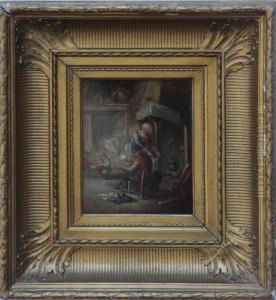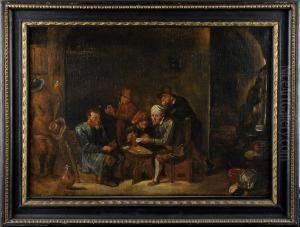David Terniers Paintings
David Teniers the Younger, born in 1610 in Antwerp, was a prominent Flemish artist renowned for his versatility and prolific output in the Baroque period. He was the son of David Teniers the Elder, a painter who was also his first teacher. Teniers the Younger quickly outgrew his father's tutelage, developing a distinctive style that earned him widespread acclaim. His work encompasses a wide range of subjects, including genre scenes, landscapes, and history paintings, though he is perhaps best known for his lively and detailed depictions of peasant life.
Teniers the Younger's talent was recognized early in his career, leading to his appointment as the court painter to Archduke Leopold Wilhelm of Austria, the governor of the Spanish Netherlands. This prestigious position allowed him to access a vast collection of art, including works by Titian, Velázquez, and Brueghel, which influenced his artistic development. Teniers was instrumental in cataloging and managing the Archduke's collection, activities that not only enhanced his understanding of art but also elevated his status in society.
Throughout his life, Teniers was an active member of the Antwerp Guild of St. Luke, serving in various capacities including its dean. His reputation extended beyond the borders of Flanders, attracting students and collectors from across Europe. He was also a founder of the Antwerp Academy of Art, a testament to his commitment to the education of future generations of artists.
David Teniers the Younger's legacy is vast, with his works held in high esteem and featured in major museums around the world. His ability to capture the nuances of everyday life with humor and empathy, combined with his technical skill, makes his paintings enduringly popular and significant in the history of art. He passed away in 1690, leaving behind a body of work that continues to be celebrated for its insight into 17th-century life and its artistic excellence.

